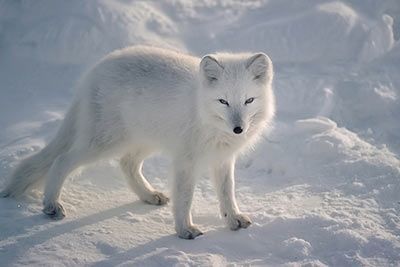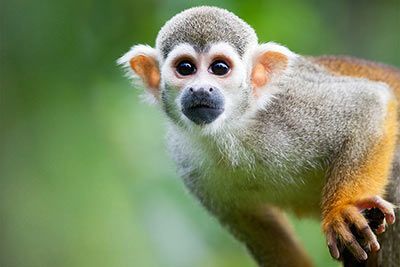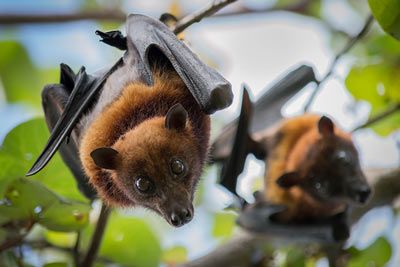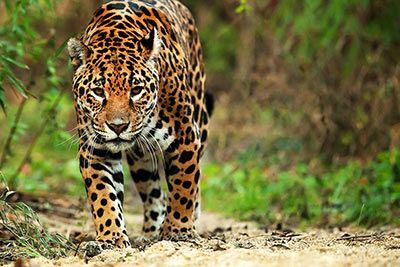Tapir
Tapir Facts
| Size | Up to 7.9 ft (243 cm) (length) |
| Speed | Up to 30 mph (48 km/h) |
| Weight | 330-705 lb (150-320 kg) |
| Lifespan | 20-25 years |
| Food | Plants, leaves, fruits |
| Predators | Wildcats, crocodiles |
| Habitat | Mexico, Central America, South America, Asia |
| Order | Odd-toed ungulates |
| Family | Tapiridae |
| Scientific name | Tapiridae |
| Characteristics | Long and flexible proboscis (trunk) |
Main Characteristics
What is this? A pig? An anteater? No, it’s a tapir! The hoofed animal has been living on earth since millions of years and it has not much changed since then. With the exception of the Antarctic, tapir fossils have been found on all continents of the earth. 10,000 years ago, tapirs even lived in South California. Although they resemble pigs and anteaters, they are related to horses and rhinos. Its most distinctive feature is the short trunk
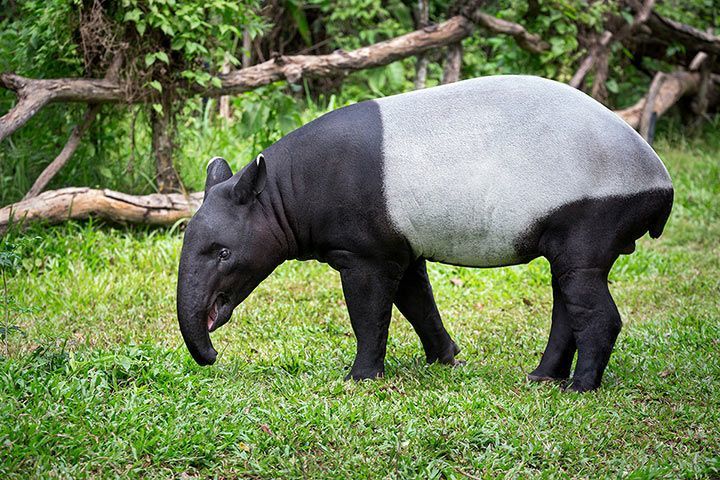
Anatomy and Appearance
Tapirs Have Trunks
The nose and the upper lip of the tapir have grown together and form a flexible trunk resembling that of an elephant. The tapir uses the trunk to reach for branches with tasty leaves and fruits. When tapirs are afraid, they hide in the water. The only thing that can still be seen of them is their trunk, which they use like a snorkel.
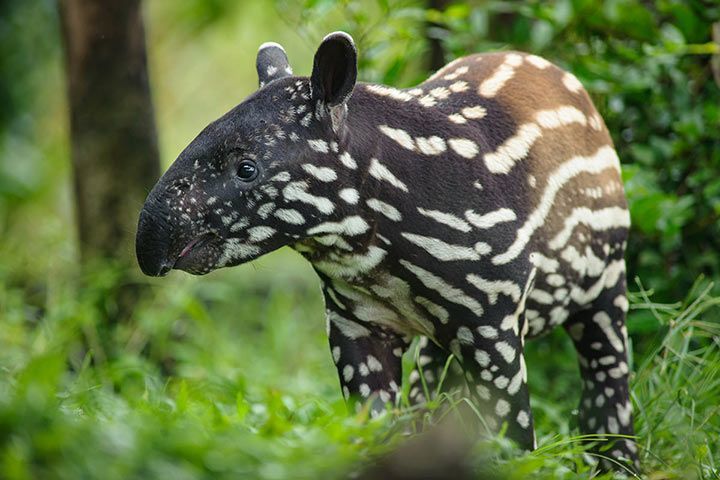
Tapir Species
In all, there are only four tapir species. All of them are endangered or threatened animal species. They primarily live in swamp regions and rain forests. One tapir species even lives in mountain regions. Tapirs can be found in many different areas from sea level to mountainous regions up to 14,763 feet (4,500 meters) height above sea level:
- Malayan tapir (Asia)
- Baird’s tapir (Central America)
- Mountain tapir (South America)
- South American tapir (South America)
The Largest and the Smallest
The largest and heaviest tapir is the Malayan tapir with a length of up to eight feet (2.43 meters). The mountain tapir is the smallest species and reaches a length of about six feet (1.82 meters).
The Malayan Tapir
The Asian tapir can only be found in Thailand, Burma, Malaysia and Indonesia. It is very different from all other species: While its head and legs are black, it looks as if it is wearing a “white blanket” on its back. This is the reason why it is called "Schabrackentapir" in German (from the Turkish word “çaprak” – saddle cloth). The biggest natural enemy of the Asian tapir is the tiger.
The Baird‘s Tapir
The Baird’s tapir is also called "macho de monte" (mountain cow) and one of the largest of all tapir species. It is the national animal of the state Belize, and its birthday is a national holiday.
The Mountain Tapir
The smallest tapir species lives in the Andes Mountains in South America: The mountain tapir has a thick coat which protects it from the cold mountain climate.
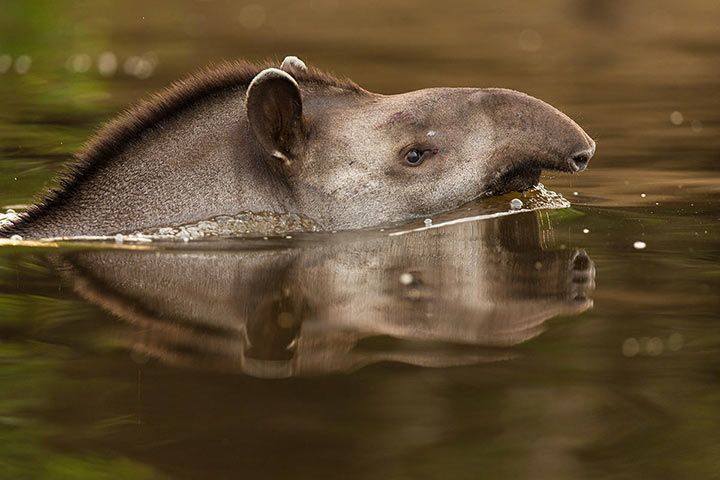
Behavior
Do Tapirs Make Sounds?
Imagine yourself ranging the tropical jungle when you suddenly hear the screeching noise of car brakes. You ask yourself: Where does this come from? Is there a road in the deepest jungle? No, it’s a tapir! The animals use high whistling sounds to “talk“ to each other. If they snort and stamp the ground with their feet, tapirs show that they are ready to defend themselves against an attack.
Can Tapirs Swim?
Despite their clumsy physique, tapirs feel most comfortable in the water love to spend a lot of time in it to cool down and to dive for tasty water plants. Tapir babies are able to swim a few days after being born.
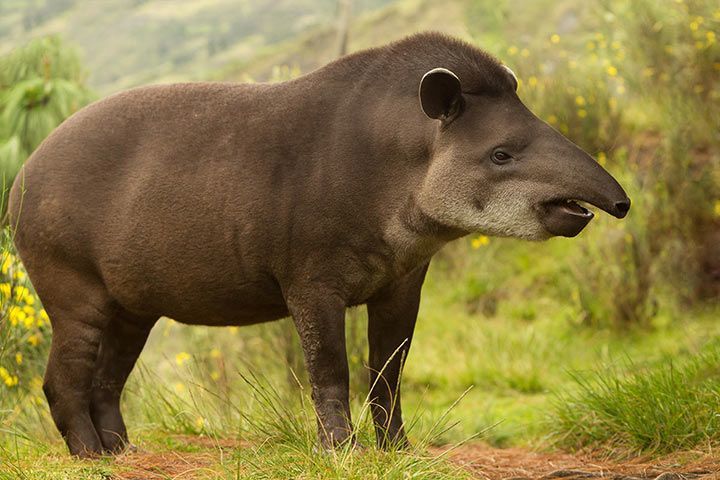
Fun Facts
The Tapir in Other Languages
The Indonesian word "badak" means "rhinoceros" as well as "tapir". In Thailand, the tapir is called "P’som-sett", which means "The mix is ready". This refers to the belief that the animal was created from other animals which were left over. But originally the word tapir derives from the language of Brazilian natives and means “chubby” (referring to the backside of the animal).
Tapirs as Road Construction Workers
With their hoofs, tapirs leave distinct traces on soft ground, which often lead to water holes. Sometimes those traces are used for the planning of roads through the mountainous landscape.
The Tapir Is Related To:
- Asian Rhinoceros
- Horse
Animals in the Same Biome:
- Asian Elephant
- Asian Rhinoceros
- Crocodile
- Hyacinth Macaw
- Jaguar
- Leopard
- Poison Dart Frog
- Sloth
- Toucan
- Tiger
- Find Out More:
- The Ugliest Animals in the World
- Watch Now on animalfunfacts.net:
 Rainforest Animals
Rainforest Animals













